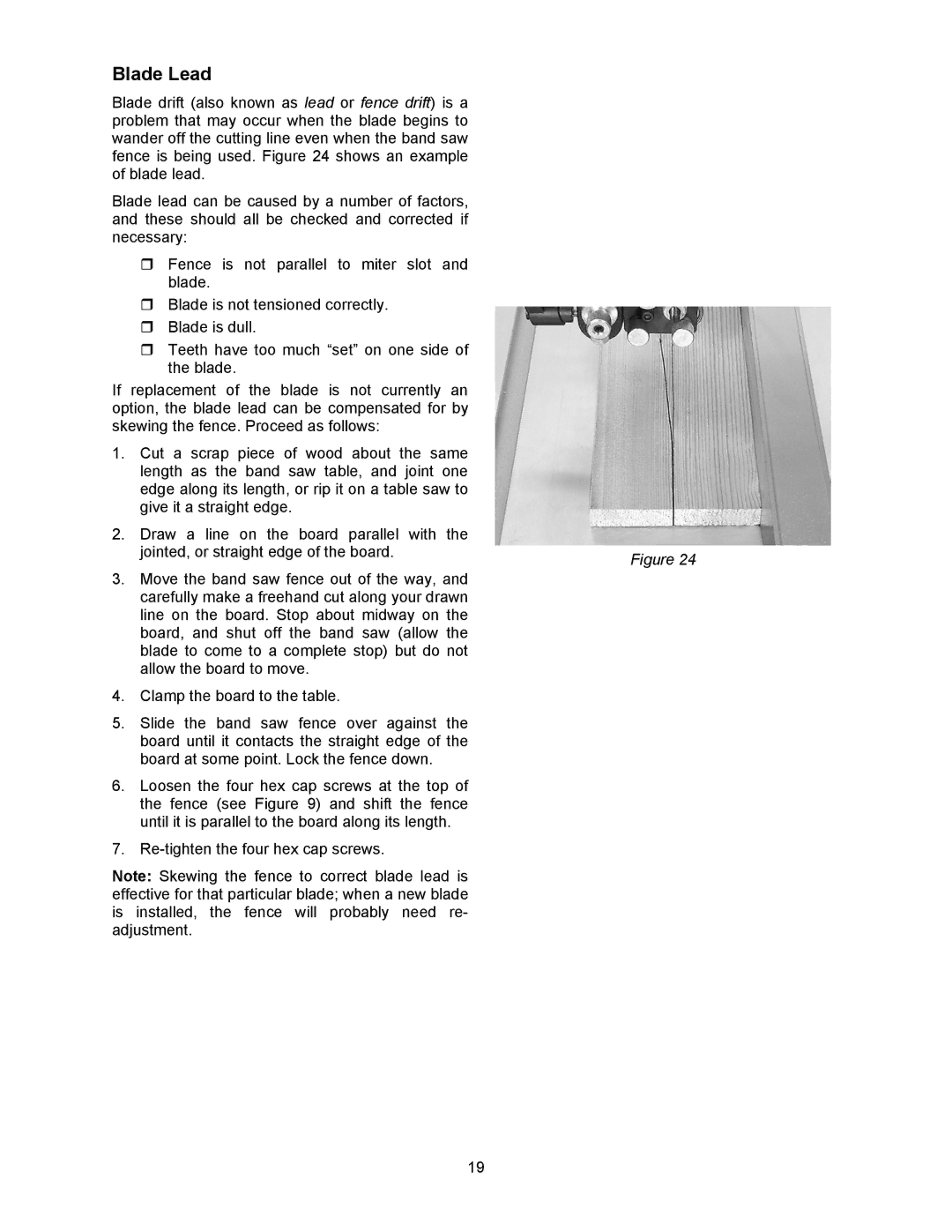
Blade Lead
Blade drift (also known as lead or fence drift) is a problem that may occur when the blade begins to wander off the cutting line even when the band saw fence is being used. Figure 24 shows an example of blade lead.
Blade lead can be caused by a number of factors, and these should all be checked and corrected if necessary:
Fence is not parallel to miter slot and blade.
Blade is not tensioned correctly.
Blade is dull.
Teeth have too much “set” on one side of the blade.
If replacement of the blade is not currently an option, the blade lead can be compensated for by skewing the fence. Proceed as follows:
1.Cut a scrap piece of wood about the same length as the band saw table, and joint one edge along its length, or rip it on a table saw to give it a straight edge.
2.Draw a line on the board parallel with the
jointed, or straight edge of the board. | Figure 24 |
|
3.Move the band saw fence out of the way, and carefully make a freehand cut along your drawn line on the board. Stop about midway on the board, and shut off the band saw (allow the blade to come to a complete stop) but do not allow the board to move.
4.Clamp the board to the table.
5.Slide the band saw fence over against the board until it contacts the straight edge of the board at some point. Lock the fence down.
6.Loosen the four hex cap screws at the top of the fence (see Figure 9) and shift the fence until it is parallel to the board along its length.
7.
Note: Skewing the fence to correct blade lead is effective for that particular blade; when a new blade is installed, the fence will probably need re- adjustment.
19
